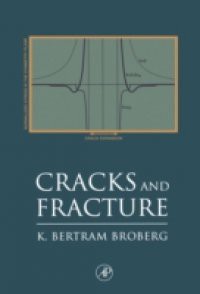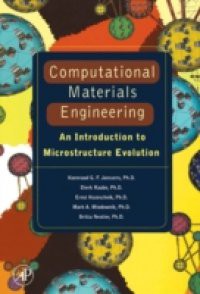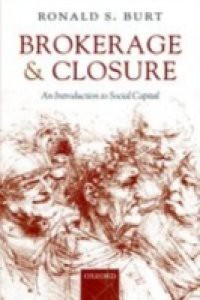Pattern recognition and computer vision and their applications have experienced enormous progress in research and development over the last two decades. This comprehensive handbook, with chapters by leading experts in their fields, documents both the basics and new and advanced results.The book gives the most total treatment of basic methods in pattern recognition including statistical, neurocomputing, syntactic/structural/grammatical approaches, feature selection and cluster analysis; and an extensive presentation of basic methods in computer vision including texture analysis and models, color, geometrical tools, image sequence analysis, etc. Major and unique applications are also covered, such as food handling using computer vision, non-destructive evaluation of materials, applications in economics and business, medical image recognition and understanding, etc. Broader system aspects are also examined, including optical pattern recognition and architectures for computer vision.Researchers, students and users of pattern recognition and computer vision will find the book an essential reference tool. The volume is also an invaluable collection of basic techniques and principles, which would otherwise be hard to assemble, in one convenient volume.Contents: Part 1. Basic Methods in Pattern Recognition1. Cluster Analysis and Related Issues (R C Dubes, Michigan State Univ.)2. Statistical Pattern Recognition (K Fukunaga, Purdue Univ.)3. Large-Scale Feature Selection (J Sklansky & W Siedlecki, Univ. California) [reprint]4. Neural Net Computing for Pattern Recognition (Y-H Pao, Case Western Reserve Univ.)5. Structural and Syntactic Pattern Recognition (H Bunke, Univ. Bern)6. A Formal Parallel Model for Three-Dimensional Object Pattern Representation (P S P Wang, Northeastern Univ.)Part 2. Basic Methods in Computer Vision1. Texture Analysis (M Tuceryan & A K Jain, Michigan State Univ.)2. Model Based Texture Segmentation and Classification (R Chellappa, Univ. Maryland & R L Kashyap, Purdue Univ. & B S Manjunath, Univ. California)3. Colour in Computer Vision (Q-T Luong, INRIA, France)4. Projective Geometry and Computer Vision (R Mohr, LIFIA, France)5. 3-D Motion Analysis from Image Sequences Using Point Correspondences (J J Weng & T S Huang, Univ. Illinois)6. Segmentation Tools in Mathematical Morphology (S Beucher) [reprint]7. Parallel Thinning Algorithm for Binary Digital Patterns (Y-S Chen, Yuan-Ze Inst. Tech. & W-H Hsu, Nat'l Tsing-Hua Univ.)Part 3. Recognition Applications1. Pattern Recognition in Nondestructive Evaluation of Materials (C H Chen, Univ. Massachusetts Dartmouth)2. Pattern Recognition in Geophysical Signal Processing and Interpretation (Y-D Li, Z-Q Bian, P-F Yan & Tong Chang, Tsinghua Univ.)3. Signal Transient Analyses and Classification Techniques (R C Olson, Engrg & Sci. Assoc. Inc.)4. Analysis of Economic and Business Information (C Gianotti, Politecnico di Milano)5. Optical Handwritten Chinese Character Recognition (J S Huang, Acad. Sinica, Taiwan)6. Automatic Analysis and Understanding of Documents (Y Y Tang, D Y Chang, M P Wang & A H Vagnucci, Univ. Pittsburgh)8. Understanding Microvessels in Two and Three Dimensions (C E Wick, US Naval Acad., M H Loew & J Kurantsin-Mills, George Washington Univ.)Part 4. Inspection and Robotic Applications1. Computer Vision in Food Handling and Sorting (H Arnason & M Ásmundsson, Marel HF, Iceland)2. Image Information Retrieval System (Y-H Ang, A D Narasimhalu & S Al-Hawamdeh, Nat'l Univ. Singapore)3. Context Related Issues in Image Understanding (L F Pau, Digital Equipment Europe)4. Positional Estimation Techniques for an Autonomous Mobile Robot – A Review (R Talluri & J K Aggarwal, Univ. Texas, Austin)Part 5. Architectures and Technology1. Vision Engineering: Designing Computer Vision Systems (R Chellappa & A Rosenfeld, Univ. Maryland)2. Optical Pattern Recognition for Computer Vision (D Casasent, Carnegie Mellon Univ.)3. Spatial Knowledge Representation for Iconic Image Database (S-Y Lee & F-J Hsu, Nat'l Chiao-Tung Univ.)4. Viewer-Centered Representations in Object Recognition: A Computational Approach (R Basri, Massachusetts Inst. Tech.)5. Connectionist Architectures in Low Level Image Segmentation (W E Blanz, C E Cox & S L Gish, IBM, Almaden Res. Ctr.)6. Architectures for Image Processing and Computer Vision (G Garibotto) [reprint]7. Image Information Systems: Where Do We Go From Here? (S K Chang, Univ. Pittsburg & A Hsu, Siemens Corp. Res.) [reprint]Readership: Computer scientists, engineers, statisticians and others.Key Features:Consists of thousands of pages of articles written by internationally recognized experts in the field along with thousands of relevant literature citationsThe biological and medical relevance of porphyrins is linked to their chemical, physical and structural featuresA vast array of information on porphyrin science consolidated into an up-to-date multi-volume series of clear and concise coverage, including hundreds of figures, tables and structural formulasOf interest to chemists, physicists, material scientists, polymer scientists, spectroscopists, electrochemists, electronics and photonics engineers, biochemists, biophysicists, medicinal chemists and clinicians


















